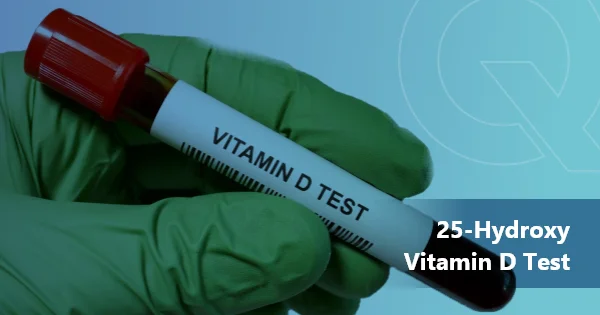Contents
Overview
Vitamin D is one of many vitamins our bodies need to stay healthy.
Vitamin D deficiency is quite common, and most people are unaware of it.
Vitamin D is essential:
- To help regulate calcium absorption, phosphate and (to a lesser extent) magnesium from the gut.
- For the growth and health of bone, without it, bones will be soft, malformed, and unable to repair themselves usually, resulting in the disease called rickets in children and osteomalacia in adults.
- For musculoskeletal health.
What are the forms of Vitamin D?
There are two forms of vitamin D that can be measured in the blood – 25 hydroxyvitamin D and 1,25 dihydroxyvitamin D.
25 hydroxyvitamin D is the primary form of vitamin D.
Why is 25 hydroxyvitamin D measured?
25 hydroxyvitamin D is the most useful indicator of vitamin D status in individuals and is the form most commonly measured. It is the best way of estimating vitamin D status because 25 hydroxyvitamin D remains in the blood longer and is present at much higher concentrations than 1,25 dihydroxyvitamin D.
Occasionally it may be necessary to measure 1,25 dihydroxyvitamin D to determine whether the kidney is converting an appropriate amount of inactive 25-hydroxyvitamin D to the active 1,25 dihydroxyvitamin D.
What are the main sources of Vitamin D?
Vitamin D comes from 2 sources:
1) produced in the skin following exposure to sunlight (endogenous source 80%-90% of the total) and
2) ingested from foods and supplements (exogenous source 10%-20% of the total).
Both forms of vitamin D may be present in vitamin preparations and supplements. For most people, the majority (up to 90%) of vitamin D is formed following sunlight upon the skin. Both vitamin D2 and D3 are converted to 25-hydroxyvitamin D and then to 1,25 dihydroxyvitamin D.
When To Get Tested?
Your doctor may request a vitamin D measurement in the following situations:
- If you are found to have abnormal calcium, phosphate, and/or parathyroid hormone (PTH) concentration in the blood.
- As part of the investigation of some forms of bone disease or muscle weakness/pain.
- If you have a gastrointestinal tract disease that could result in malabsorption.
- If you are receiving certain anticonvulsant drugs.
However, screening may be done on people who are at high risk for vitamin D deficiency, such as those who:
- Are over the age of 65 (both skin production of vitamin D and gut absorption of vitamin D becomes lower as we get older)
- Are obese (or have lost weight from bariatric surgery)
- Are taking certain medicines, such as phenytoin
- Have osteoporosis or thin bones
- Have limited sun exposure
- Have problems absorbing vitamins and nutrients in their intestines, such as those with ulcerative colitis, Crohn disease, or celiac disease
Too much Vitamin D is bad!
High vitamin D and calcium levels can lead to calcification and damage to organs, particularly the kidneys and blood vessels.
If magnesium levels are low, they can cause a low calcium level that is resistant to vitamin D and parathyroid hormone regulation. It may be necessary to supplement magnesium and calcium to regain normal function.
Disclaimer:
This blog is for informational purposes only and should not be construed as advice or as a substitute for consulting a physician. It is not a substitute for medical advice or treatment from a healthcare professional.
Sources:
https://www.healthline.com/health/25-hydroxy-vitamin-d-test





